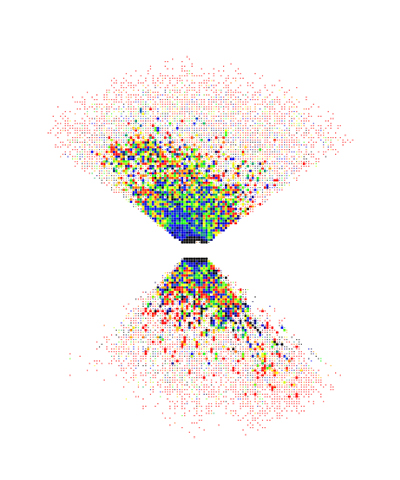
Although the name sounds fantastical enough to be taken from the pages of a science-fiction novel, Galactic Archaeology at Notre Dame is a real group doing cutting-edge research on the origins of the elements in our universe.
Among the team’s pursuits is mapping the origins of the Milky Way and examining certain second-generation stars to learn more about the first stars in the universe.
All of this started with Timothy C. Beers, chair of astrophysics in the College of Science. Notre Dame doesn’t have an astrophysics department, but when Beers arrived at the University in 2014, it established his position and helped him found his team.
“Galactic Archaeology” is a made-up term, concocted by Beers and his nine researchers. “It captures the essence of how we figure this stuff out,” he says. “We’ve got to find ancient relics that are still alive and infer, having found those, what the composition of the gas from which they formed was. Over time, you fill out the picture.”
Beers compares it to writing a novel.
“For years, you spend time coming up with the concept, and then you sit down to write it and you realize you don’t know any of the details,” he says. “At this point, we’ve identified the chapters. We’re starting to write some of the paragraphs. Slowly but surely, we are starting to find a plausible story — perhaps not unique, but plausible — of how the universe built the elements of our world.”
The Indiana native, who holds undergraduate degrees in metallurgical engineering and physics, and a doctorate in astronomy, was engaged in a postdoctoral fellowship at the California Institute of Technology when he started hanging out down the road at the Carnegie Observatories. He asked for big data sets from past observations on a particular telescope so he could practice working with the data in advance of the time he would be doing his own research on the instrument. That practice dataset was from a survey searching for metal-poor stars, which was not at all what Beers was looking to study.
 A chronographic map of the Milky Way. Courtesy Galactic Archaeology at Notre Dame.
A chronographic map of the Milky Way. Courtesy Galactic Archaeology at Notre Dame.
“It’s what I ended up doing for the rest of my life,” he says.
For the rest of the story: https://magazine.nd.edu/news/sifting-through-stardust/
Originally published by at magazine.nd.edu on October 02, 2017.